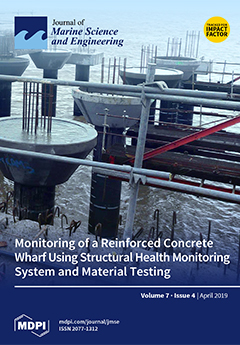Viscous drag, nonlinear in nature, is an important aspect of the fluid–structure interaction modelling and is usually not taken into account when the fluid is assumed to be inviscid. Potential flow solvers can competently compute radiation damping, which is related to the radiated
[...] Read more.
Viscous drag, nonlinear in nature, is an important aspect of the fluid–structure interaction modelling and is usually not taken into account when the fluid is assumed to be inviscid. Potential flow solvers can competently compute radiation damping, which is related to the radiated wave field. However, the drag damping primarily related to the viscous effects is usually neglected in the radiation/diffraction problems solved by the
boundary element method (BEM), also known as the
boundary integral element method (BIEM). This drag force can have a significant impact in the case of structures extending much deeper below the free surface, or for those that are completely submerged. In this paper, the drag coefficient
was quantified for the heave and surge response of a structure which consists of a moored horizontally oriented domed cylinder with two surface piercing square columns located at the top surface. The domed cylinder is the primary part and is submerged. The drag coefficient is estimated using the experimental measurements related to harmonic monochromatic wave–structure interaction. Finally, this estimated drag coefficient was used in the modified time domain model, which includes the nonlinear viscous correction term, and the resulting device response in heave and surge directions is presented for an irregular incoming wave field. The comparison of the numerical model and the experiments validates the estimated
values obtained earlier. Prior to the time domain model, frequency-dependent parameters such as added mass, radiation damping, and excitation force were computed using three mainstream potential flow packages (that is, ANSYS AQWA, WAMIT, and NEMOH), and a comparison is presented. The effect of free surface on the drag coefficient is investigated through differences in
values between heave and surge modes.
Full article





